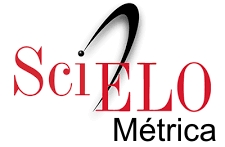Síndrome metabólico e hipotiroidismo: un estudio transversal en una población ecuatoriana
Resumen
Introducción: el síndrome metabólico y el hipotiroidismo son condiciones muy frecuentes y a menudo superpuestas. Ambos son precursores bien establecidos de la enfermedad cardiovascular aterogénica.
Objetivo: evaluar la asociación entre el hipotiroidismo y el síndrome metabólico en pacientes que asisten a la consulta de medicina interna del Hospital IESS de Riobamba, Ecuador.
Metodología: se realizó una investigación de tipo descriptiva, correlacional con un diseño no experimental de corte transversal desde enero de 2022 hasta julio de 2023. Se incluyeron 985 sujetos de ambos sexos, mayores de 25 años. A todos los pacientes se les realizó un exhaustivo examen físico y se tomaron muestras de sangre para la realización de pruebas bioquímicas y hormonales.
Resultados: 84,97% de los participantes eran eutiroideos, 1,93% presentaron hipotiroidismo manifiesto y 4,97% hipotiroidismo subclínico, mientras que 32,99% tenían síndrome metabólico. Se encontraron diferencias significativas en la edad, peso, circunferencia de cintura, colesterol total, LDL colesterol, triglicéridos, glucosa postpandrial y HOMA-IR entre los sujetos con hipotiroidismo manifiesto y los eutiroideos (p<0,05). Se observó una correlación positiva entre la TSH y todos los componentes del síndrome metabólico (p<0,05). La prevalencia de síndrome metabólico fue significativamente mayor en los sujetos con hipotiroidismo manifiesto (p < 0,05) que en los demás grupos. Se observó que los niveles de T4L (OR 8,82; IC 95% 1,56-49,8) y TSH (OR 1,61; IC 95% 1,19-2,18) son factores de riesgo para el desarrollo de síndrome metabólico.
Conclusión: el hipotiroidismo y el síndrome metabólico están altamente asociados. Es recomendable que los sujetos con hipotiroidismo sean examinados para detectar síndrome metabólico y viceversa. La evaluación de la función tiroidea en pacientes con este síndrome puede ayudar a identificar y prevenir el riesgo de eventos cardiovasculares y cerebrovasculares.
Citas
2. Madan K, Paliwal S, Sharma S, Kesar S, Chauhan N, Madan M. Metabolic Syndrome: The constellation of co-morbidities, a global threat. Endocr Metab Immune Disord Drug Targets. 2023;23(12):1491-1504. doi: 10.2174/1871530323666230309144825
3. O'Neill S, O'Driscoll L. Metabolic syndrome: a closer look at the growing epidemic and its associated pathologies. Obes Rev. 2015;16(1):1-12. doi: 10.1111/obr.12229
4. Alberti KGMM, Zimmet P, Shaw J. Metabolic syndrome--a new world-wide definition. A Consensus Statement from the International Diabetes Federation. Diabet Med. 2006;23(5):469-80. doi: 10.1111/j.1464-5491.2006.01858.x
5. Brenta G, Sosa Caballero A, Nunes MT. Case finding for hypothyroidism should include type 2 diabetes and metabolic syndrome patients: a Latin American Thyroid Society (LATS) position statement. Endocr Pract. 2019;25(1):101-5. doi: 10.4158/EP-2018-0317
6. Ding X, Zhao Y, Zhu ChY, Wu LP, Wang Y, Peng ZY, et al. The association between subclinical hypothyroidism and metabolic syndrome: an update meta-analysis of observational studies. Endocr J. 2021;68(9):1043-56. doi: https://doi.org/10.1507/endocrj.EJ20-0796
7. Liu YY, Brent GA. Thyroid hormone crosstalk with nuclear receptor signaling in metabolic regulation. Trends Endocrinol Metab. 2010;21(3):166-73. doi: 10.1016/j.tem.2009.11.004
8. Dimitriadis G, Mitrou P, Lambadiari V, Boutati E, Maratou E, Panagiotakos DB, et al. Insulin action in adipose tissue and muscle in hypothyroidism. J Clin Endocrinol Metab. 2006;91(12):4930-7. doi: 10.1210/jc.2006-0478
9.Lemieux I, Després JP. Metabolic syndrome: Past, present and future. Nutrients. 2020;12(11):3501. doi: 10.3390/nu12113501
10. He J, Lai Y, Yang J, Yao Y, Li Y, Teng W, Shan Z. The relationship between thyroid function and metabolic syndrome and its components: A cross-sectional study in a Chinese population. Front Endocrinol (Lausanne). 2021;12:661160. doi: 10.3389/fendo.2021.661160
11.Teixeira PFDS, Dos Santos PB, Pazos-Moura CC. The role of thyroid hormone in metabolism and metabolic syndrome. Ther Adv Endocrinol Metab. 2020; 11:2042018820917869. doi: 10.1177/2042018820917869
12.Thygesen LC, Ersbøll AK. When the entire population is the sample: strengths and limitations in register-based epidemiology. Eur J Epidemiol. 2014;29(8):551-8. doi: 10.1007/s10654-013-9873-0
13. Su X, Peng H, Chen X, Wu X, Wang B. Hyperlipidemia and hypothyroidism. Clin Chim Acta. 2022; 527:61-70. doi: 10.1016/j.cca.2022.01.006
14. Gao M, Cao L, Wang H, Peng R, Xiao X, Wang G, et al. Correlation between subclinical hypothyroidism and dyslipidemia in women in northeast China. Acta Endocrinol (Buchar). 2021;17(2):282-5. doi: 10.4183/aeb.2021.282
15. Díez JJ, Iglesias P. Serum cholesterol and triglyceride concentrations in diabetic patients with subclinical hypothyroidism. Endocrinol Nutr. 2014; 61(8):419-25. doi: 10.1016/j.endonu.2014.01.012
16. Zhu X, Cheng SY. New insights into regulation of lipid metabolism by thyroid hormone. Curr Opin Endocrinol Diabetes Obes. 2010; 17(5):408-13. doi: 10.1097/MED.0b013e32833d6d46
17. Tan KC, Shiu SW, Kung AW. Effect of thyroid dysfunction on high-density lipoprotein subfraction metabolism: roles of hepatic lipase and cholesteryl ester transfer protein. J Clin Endocrinol Metab. 1998; 83(8):2921-4. doi: 10.1210/jcem.83.8.4938
18. Feingold KR. The effect of endocrine disorders on lipids and lipoproteins. 2023 Apr 6. In: Feingold KR, Anawalt B, Blackman MR, Boyce A, Chrousos G, Corpas E, et al, editors. Endotext [Internet]. South Dartmouth (MA): MDText.com, Inc.; 2000. [cited 2022 Dec 20]. Available from: https://www.ncbi.nlm.nih.gov/books/NBK409608
19. Santi A, Duarte MM, Moresco RN, Menezes C, Bagatini MD, Schetinger MR, Loro VL. Association between thyroid hormones, lipids and oxidative stress biomarkers in overt hypothyroidism. Clin Chem Lab Med. 2010; 48(11):1635-9. doi: 10.1515/CCLM.2010.309
20. de Moura Souza A, Sichieri R. Association between serum TSH concentration within the normal range and adiposity. Eur J Endocrinol. 2011; 165(1):11-5. doi: 10.1530/EJE-11-0261
21. Lee YK, Kim JE, Oh HJ, Park KS, Kim SK, Park SW, Kim MJ, Cho YW. Serum TSH level in healthy Koreans and the association of TSH with serum lipid concentration and metabolic syndrome. Korean J Intern Med. 2011; 26(4):432-9. doi: 10.3904/kjim.2011.26.4.432
22. Yang W, Jin Ch, Wang H, Lai Y, Li J, Shan Z. Subclinical hypothyroidism increases insulin resistance in normoglycemic people. Front Endocrinol (Lausanne). 2023; 14:1106968. doi: 10.3389/fendo.2023.1106968
23. Koppad G. Association between insulin resistance and hypothyroidism - a case-control study. J Assoc Physicians India. 2020; 68(1):46
24. Stanická S, Vondra K, Pelikánová T, Vlcek P, Hill M, Zamrazil V. Insulin sensitivity and counter-regulatory hormones in hypothyroidism and during thyroid hormone replacement therapy. Clin Chem Lab Med. 2005;43(7):715-20. doi: 10.1515/CCLM.2005.121
25. Iwen KA, Schröder E, Brabant G. Thyroid hormones and the metabolic syndrome. Eur Thyroid J. 2013; 2(2):83-92. doi: 10.1159/000351249
26. Bianco AC, Dumitrescu A, Gereben B, Ribeiro MO, Fonseca TL, Fernandes GW, Bocco BMLC. Paradigms of dynamic control of thyroid hormone signaling. Endocr Rev. 2019; 40(4):1000-47. doi: 10.1210/er.2018-00275
27. Klieverik LP, Janssen SF, van Riel A, Foppen E, Bisschop PH, Serlie MJ, et al. Thyroid hormone modulates glucose production via a sympathetic pathway from the hypothalamic paraventricular nucleus to the liver. Proc Natl Acad Sci U S A. 2009; 106(14):5966-71. doi: 10.1073/pnas.0805355106
28. McAninch EA, Bianco AC. Thyroid hormone signaling in energy homeostasis and energy metabolism. Ann N Y Acad Sci. 2014; 1311:77-87. doi: 10.1111/nyas.12374
29. Fontenelle LC, Feitosa MM, Severo JS, Freitas TE, Morais JB, Torres-Leal FL, Henriques GS, do Nascimento Marreiro D. Thyroid function in human obesity: Underlying mechanisms. Horm Metab Res. 2016; 48(12):787-94. doi: 10.1055/s-0042-121421
30. Brenta G. Why can insulin resistance be a natural consequence of thyroid dysfunction? J Thyroid Res. 2011; 2011:152850. doi: 10.4061/2011/152850
31. Senese R, Lasala P, Leanza C, de Lange P. New avenues for regulation of lipid metabolism by thyroid hormones and analogs. Front Physiol. 2014; 5: 475. doi: 10.3389/fphys.2014.00475
32. Razvi S, Jabbar A, Pingitore A, Danzi S, Biondi B, Klein I, Peeters R, Zaman A, Iervasi G. Thyroid hormones and cardiovascular function and diseases. J Am Coll Cardiol. 2018 Apr 24;71(16):1781-1796. doi: 10.1016/j.jacc.2018.02.045
33. Khatiwada S, Sah SK, Kc R, Baral N, Lamsal M. Thyroid dysfunction in metabolic syndrome patients and its relationship with components of metabolic syndrome. Clin Diabetes Endocrinol. 2016; 2:3. doi: 10.1186/s40842-016-0021-0
34. Kim HJ, Bae JC, Park HK, Byun DW, Suh K, Yoo MH, et al. Triiodothyronine levels are independently associated with metabolic syndrome in euthyroid middle-aged subjects. Endocrinol Metab (Seoul). 2016; 31(2):311-9. doi: 10.3803/EnM.2016.31.2.311
35. Roos A, Bakker SJ, Links TP, Gans RO, Wolffenbuttel BH. Thyroid function is associated with components of the metabolic syndrome in euthyroid subjects. J Clin Endocrinol Metab. 2007; 92(2):491-6. doi: 10.1210/jc.2006-1718
36. Shin KA, Kim EJ. Association between thyroid hormone and components of metabolic syndrome in euthyroid Korean adults: A population-based study. Medicine (Baltimore). 2021; 100(51):e28409. doi: 10.1097/MD.0000000000028409

















